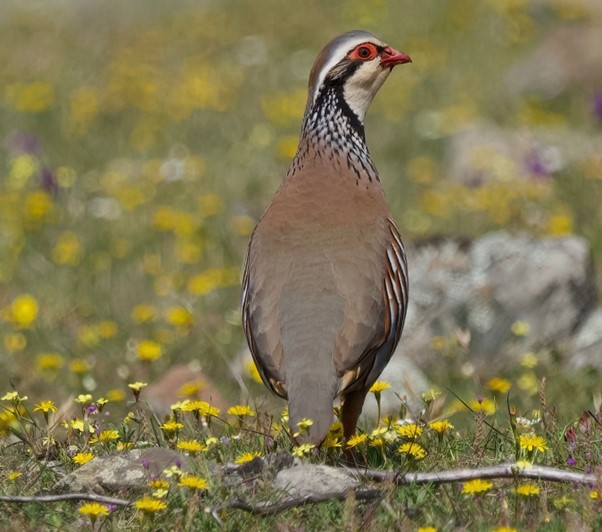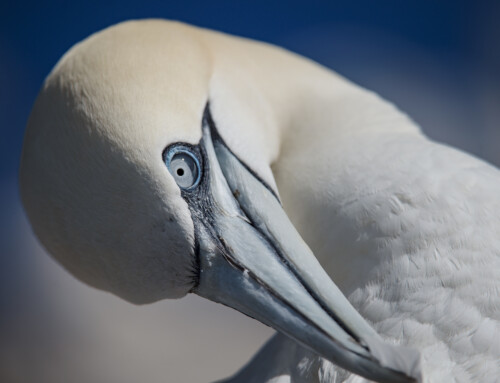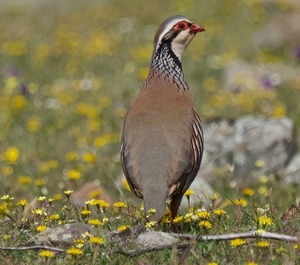 LINKED PAPER
LINKED PAPER
Novel genome reveals susceptibility of popular gamebird, the red-legged partridge (Alectoris rufa, Phasianidae), to climate change. Balaji, C., Forcina, G., Garg, K.M, Irestedt, M., Guerrini, M., Barbanera, F. & Rheindt, F.E. 2021Genomics. doi: 10.1016/j.ygeno.2021.08.010 VIEW
Referred to as a game species of utmost importance for the economy of rural areas in southwestern Europe, the Red-Legged Partridge (Alectoris rufa Linnaeus, 1758) is well impressed in the collective imaginary of Old-World hunters and gourmets. Not surprisingly, most of the attention raised by this species over the last decades resides in its lucrative interest for the broader society. Nevertheless, it was only recently that the entire genome of such paradigmatic gamebird has been made available, which opens new perspectives for the study of its ecology as well as to enhance its conservation management and production performances in captivity.
Noteworthy, the populations of the Red-Legged Partridge (similar to those of other Alectoris species) have suffered a sharp decrease throughout its entire natural distribution area stretching from Iberia through southern and central France to northwestern Italy, and also including the Balearics, Corsica, and part of the Tuscan Archipelago (Madge & McGowan 2002). This decline was primarily due to landscape changes that occurred as a result of agricultural mechanisation in some areas and – perhaps mostly – rural abandonment in others with a consequent increase in the vegetation cover reducing habitat suitability for this species. Other threatening factors are overharvesting and human-mediated hybridisation with the Chukar Partidge (Alectoris chukar) (Barbanera et al. 2009). Moreover, there is a mounting body of evidence that global warming is having a deleterious effect on the breeding success of this species in the southernmost part of its range, and it might be also related to the increased prevalence of some infectious diseases (see Queirós et al. 2022).
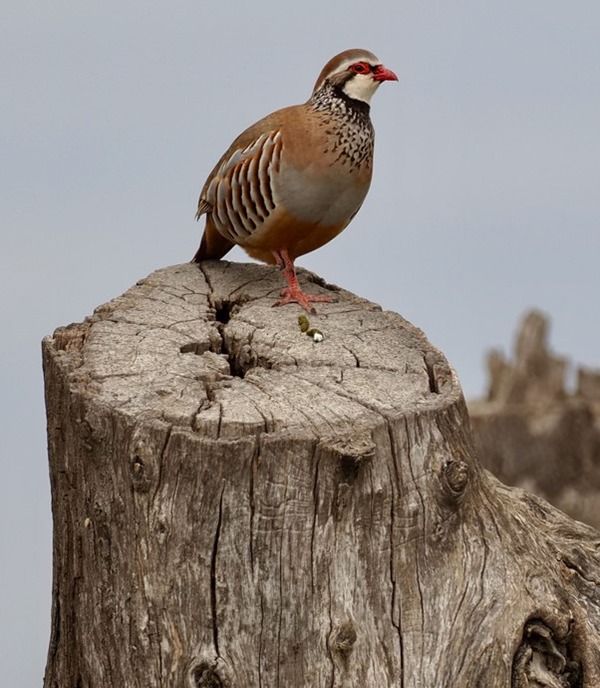
Figure 1 Red-legged Partridge roosting on a log of wood, Andalusia, Spain © Juan José Negro.
Interestingly, the susceptibility of the Red-Legged Partridge to climate change is precisely what emerged in a study that was recently published in Genomics. The research was led by the University of Pisa (Italy), where the Red-Legged Partridge is the focus of a well-established research line since the early 2000s, the National University of Singapore (Singapore) and Ashoka University (India). Indeed, the demographic analyses based on the first entire Red-Legged Partridge genome (and of the whole genus Alectoris as well) revealed the impact of climate changes associated with Quaternary glaciations, with a marked demographic collapse around 140,000 years ago, coinciding with the rise in temperature during the Riss-Würm Interglacial. This period witnessed an increase in forested areas to the detriment of open habitats dominated by herbaceous vegetation, which are the preferred habitat for partridges. It is worth noting that the genetic diversity of the species has not recovered ever since, and its levels are still minimal.

Figure 2 Red-legged Partridge in a ploughed field, Andalusia, Spain © Juan José Negro.
Other than revealing what happened in the Pleistocene, this study has generated genomic resources of great interest to the community of people who work with the Red-Legged Partridge, which includes breeders, hunters, researchers and conservationists. The availability of the first complete genome represents a crucial tool for future studies on productivity, immune response and adaptation to local conditions as well as population genomics and phylogeography. This resource looks particularly promising for genomic introgression studies aiming to assess its effects on the viability and reproduction of the Red-Legged Partridge and related species, provided that this phenomenon might be not as overarching as previously thought (Forcina et al. 2021). Nevertheless, this intriguing microevolutionary scenario, presumably due to purifying selection (Tanini et al. 2022), will be clarified only by means of comparative studies based on the re-sequencing of additional genomes.
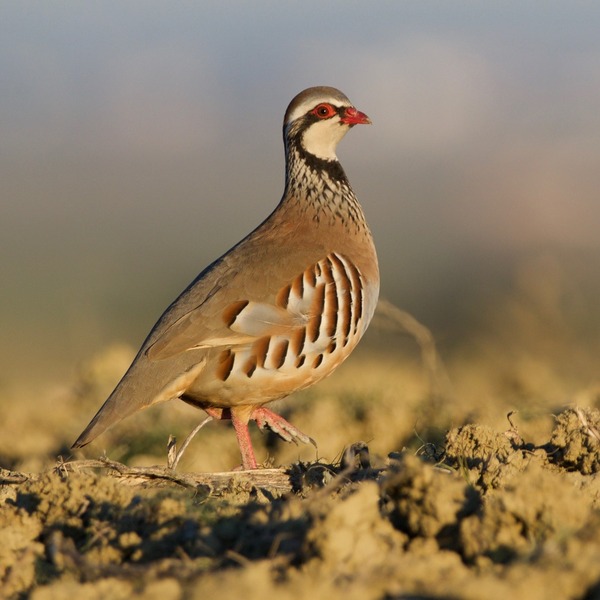
Figure 3Red-legged Partridge in a ploughed field, Andalusia, Spain © Juan José Negro.
The entire genome sequenced belongs to a Red-Legged Partridge from Elba Island (Tuscany), where the most important Italian wild population of this species is found (Forcina et al. 2020). On the basis of the above mentioned, it is crucial that other research groups will soon follow this example and publish genomes of individuals belonging to populations of evolutionary (e.g., encompassing different bioclimatic regions and from other islands and mountain changes) and conservation interest (for instance, from protected areas where no restocking practices are carried out) for comparative purposes. Based on previous genome-wide analyses and/or historical information, partridges from northern (e.g., Asturias and Castilla y León) and southern (Doñana and Sierra Nevada National Parks) Spain as well as some regions in Portugal (upper Douro and Tagus valleys) would seem excellent candidates.
References
Barbanera, F., Guerrini, M., Khan, A.A., Panayides, P., Hadjigerou, P., Sokos, C., Gombobaatar, S., Samadi, S., Khan, B.Y., Tofanelli, S., Paoli, G. & Dini, F. 2009. Human-mediated introgression of exotic chukar (Alectoris chukar, Galliformes) genes from East Asia into native Mediterranean partridges. Biological Invasions 11: 333-348. VIEW
Forcina, G., Guerrini, M. & Barbanera, F. 2020. Non-native and hybrid in a changing environment: conservation perspectives for the last Italian red-legged partridge (Alectoris rufa) population with long natural history. Zoology 138: 125740. VIEW
Forcina, G., Tang, Q., Cros, E., Guerrini, M., Rheindt, F.E. & Barbanera F. 2021. Genome-wide markers redeem the lost identity of a heavily managed gamebird. Proceedings of the Royal Society Series B: Biological Sciences 288: 20210285. VIEW
Madge, S. & McGowan, P. 2002. Pheasants, partridges and grouse. A and C Black Publishers Ltd. London, UK.
Queirós, J., Barros, S.C., Sánchez-Cano, A., Henriques, A.M., Fagulha, T., Dos Santos, F.A., Duarte, M.D., Fontoura-Gonçalves, C., Gonçalves, D., Rodrigues, M., Cabrera, T.C., de Mera, I.G.F., Gortazar, C., Höfle, U. & Alves, P.C. 2022. Bagaza virus in wild birds, Portugal, 2021. Emerging Infectious Diseases 28: 1504. VIEW
Tanini, D., Guerrini, M., Vannini, C., Barbanera, F. 2022. Unexpected genetic integrity boosts hope for the conservation of the red-legged partridge (Alectoris rufa, Galliformes) in Italy. Zoology 155: 126056. VIEW
Image credit
Top right: Red-legged Partridge in dandelion field, Andalusia, Spain © Juan José Negro.
If you want to write about your research in #theBOUblog, then please see here.


